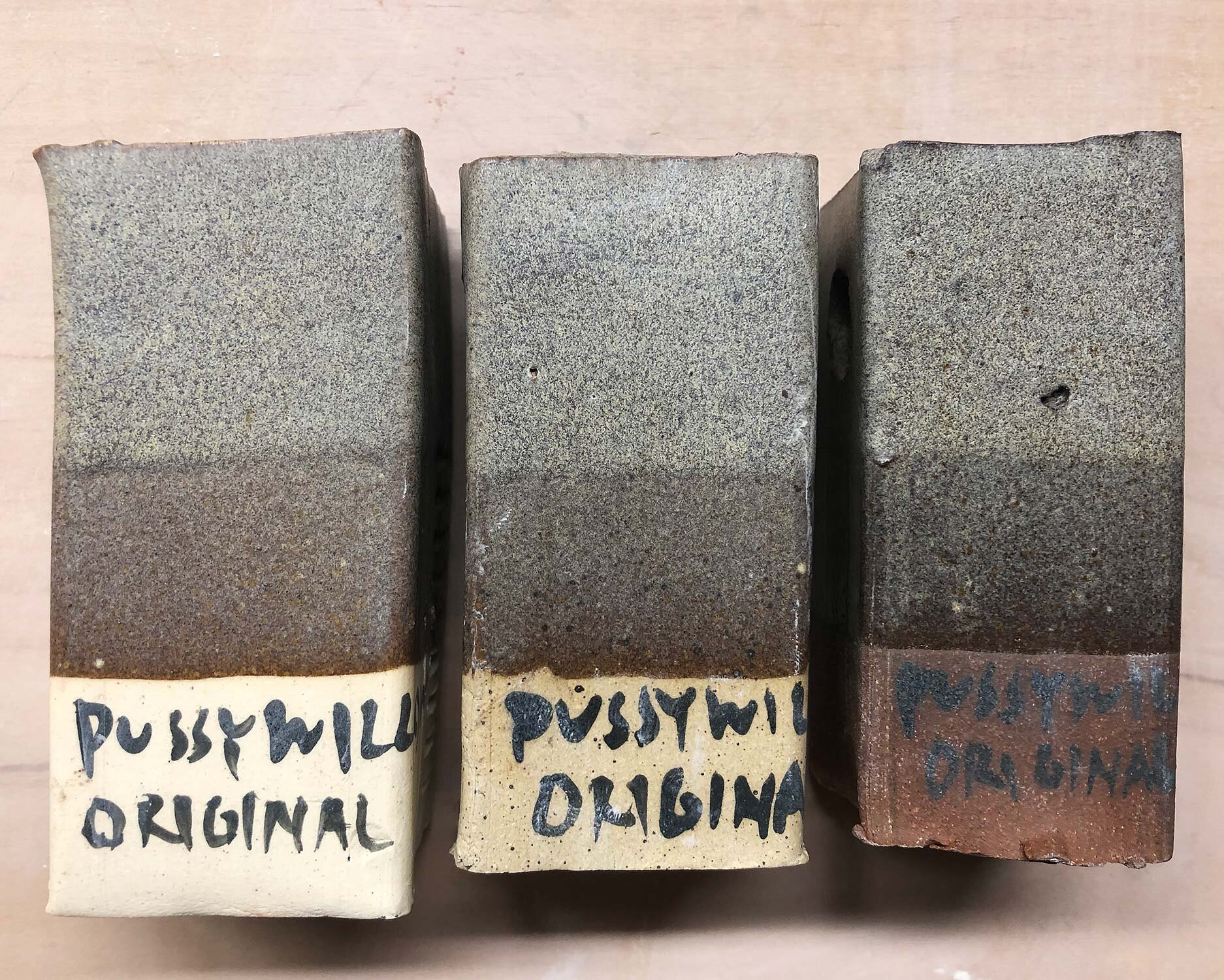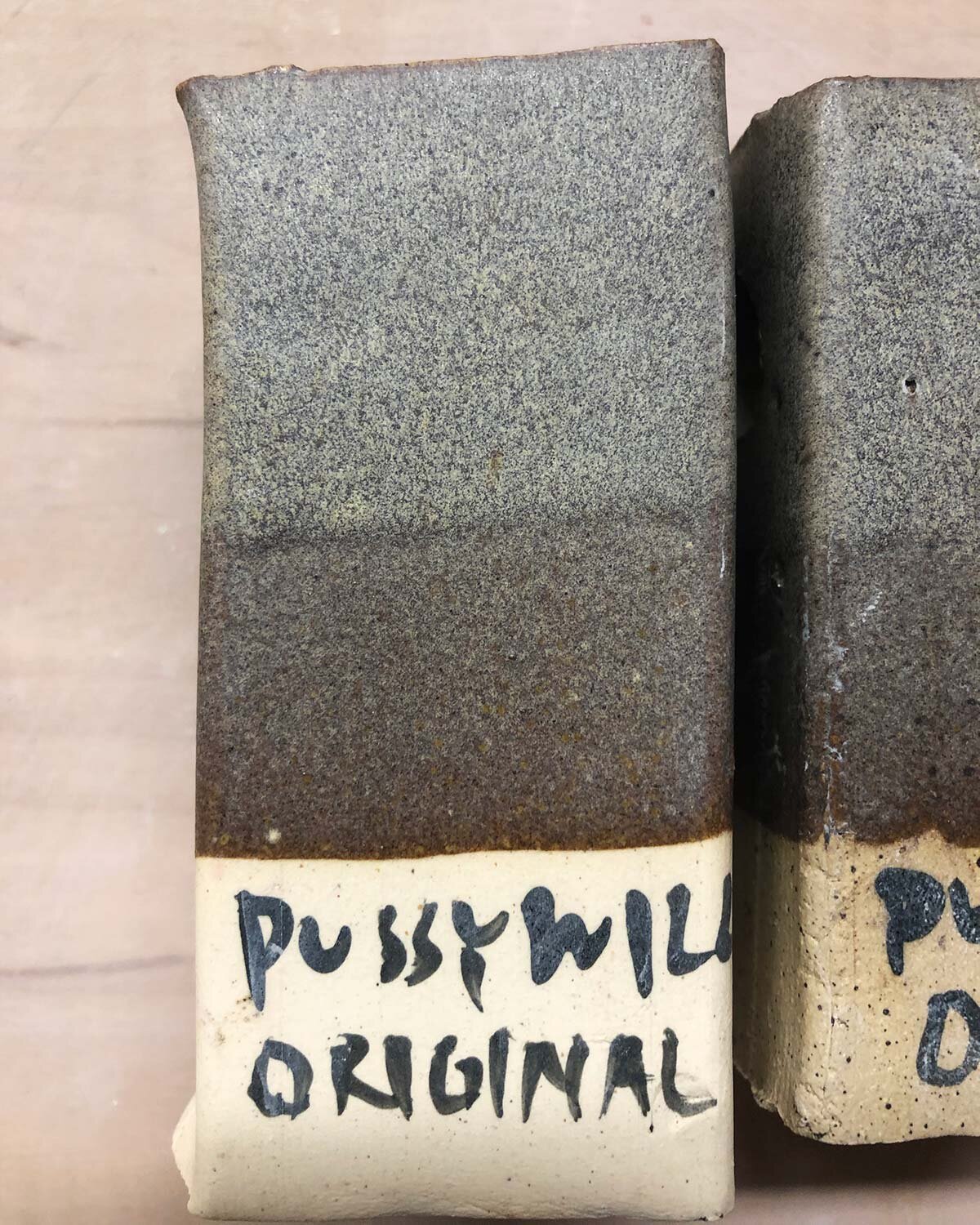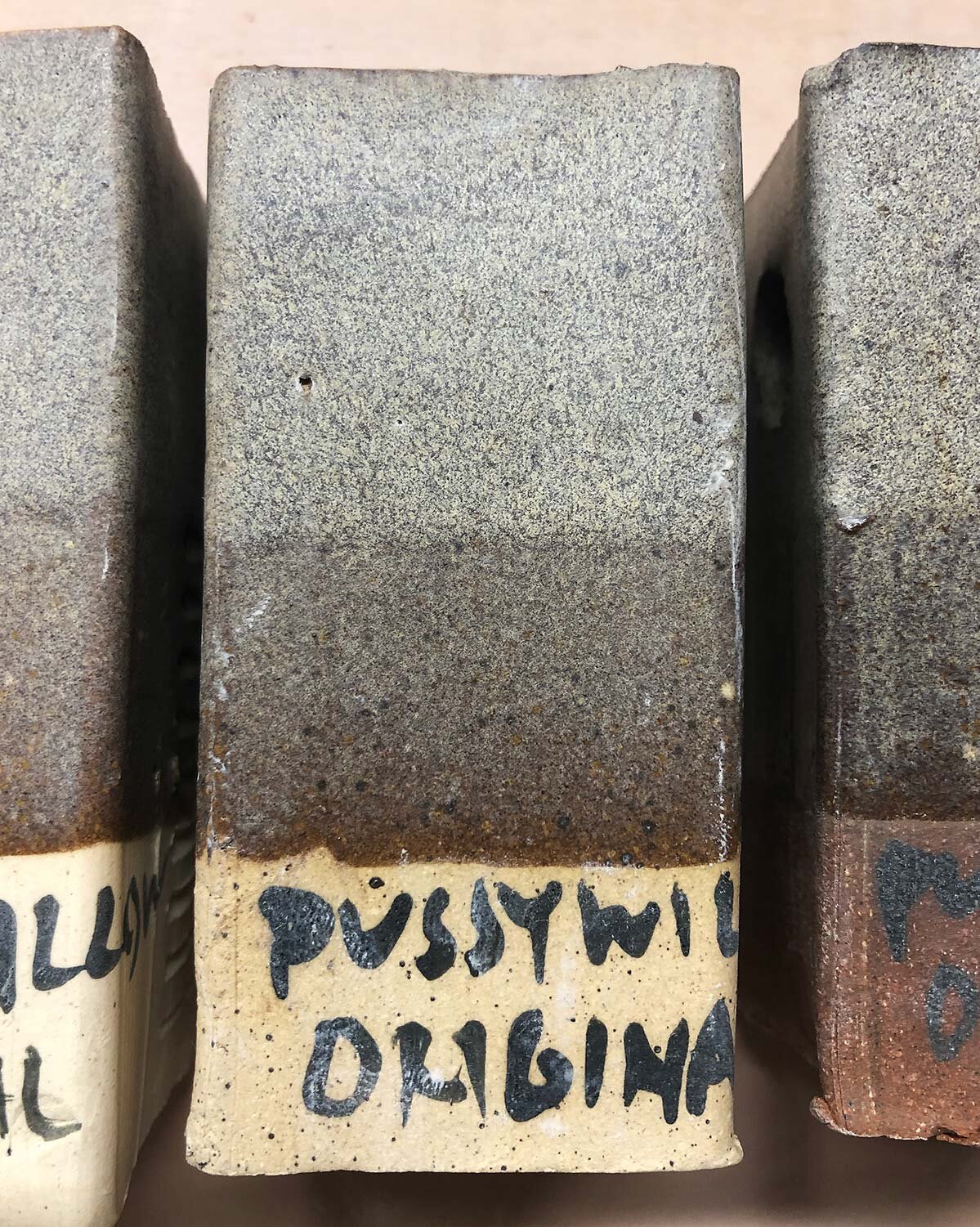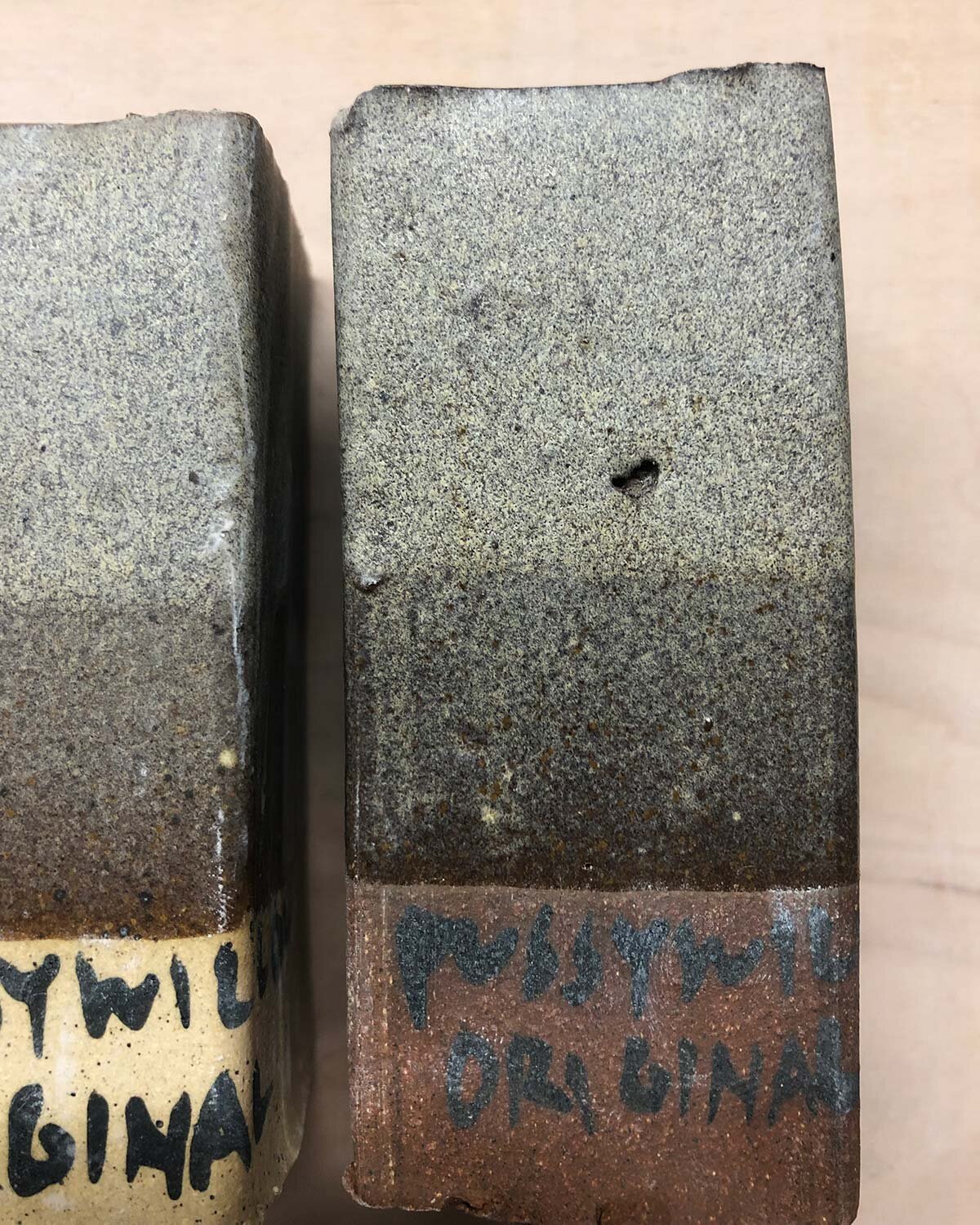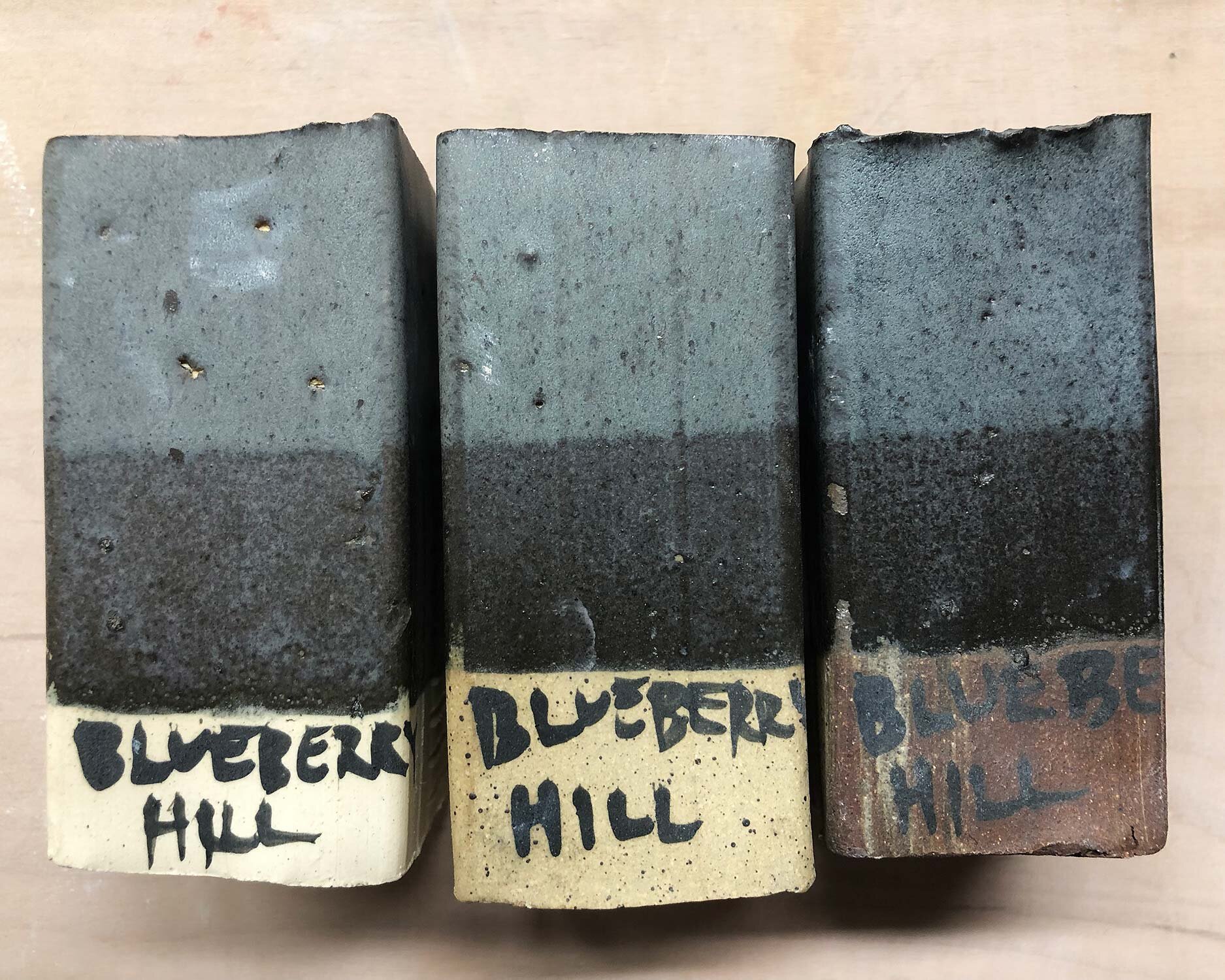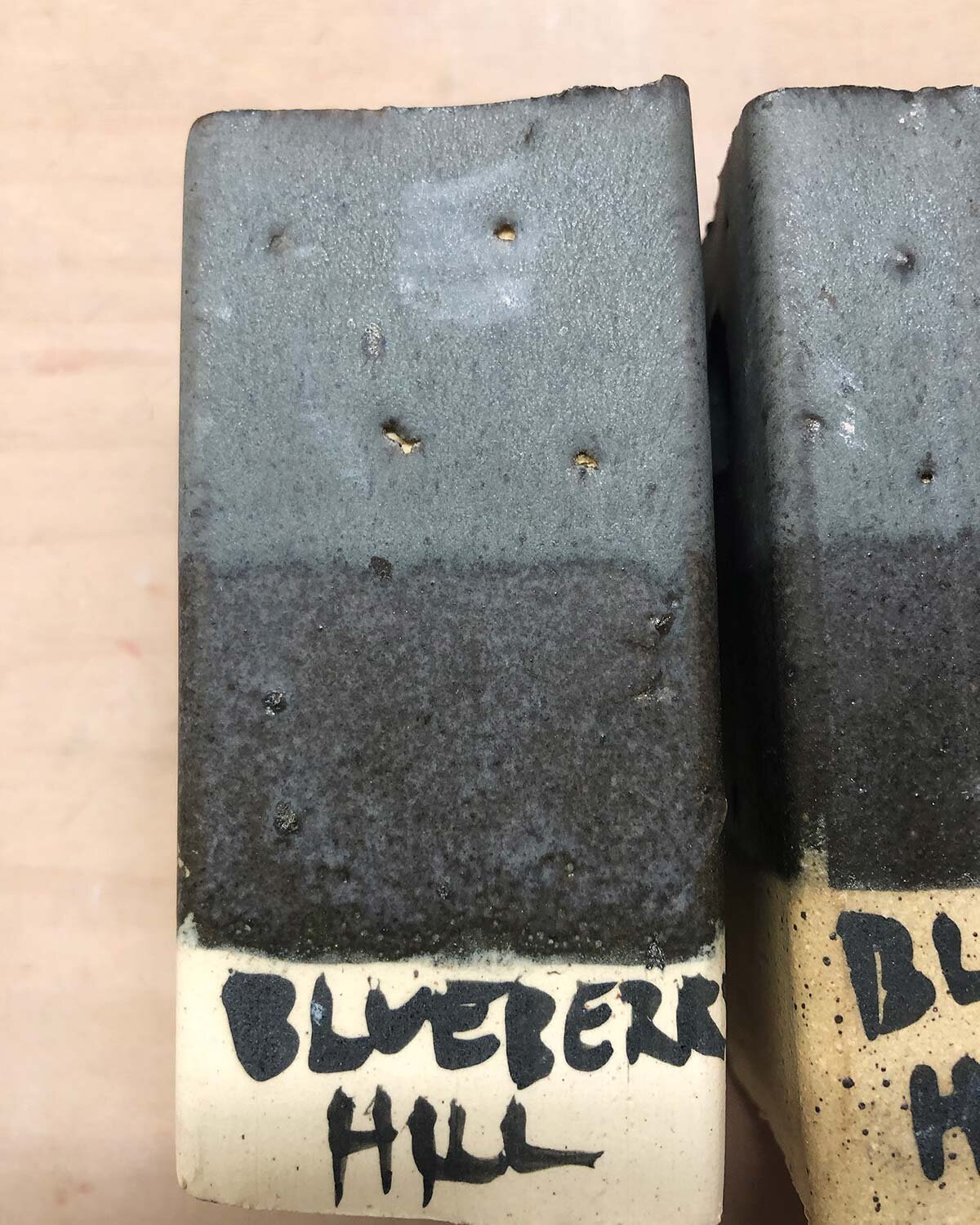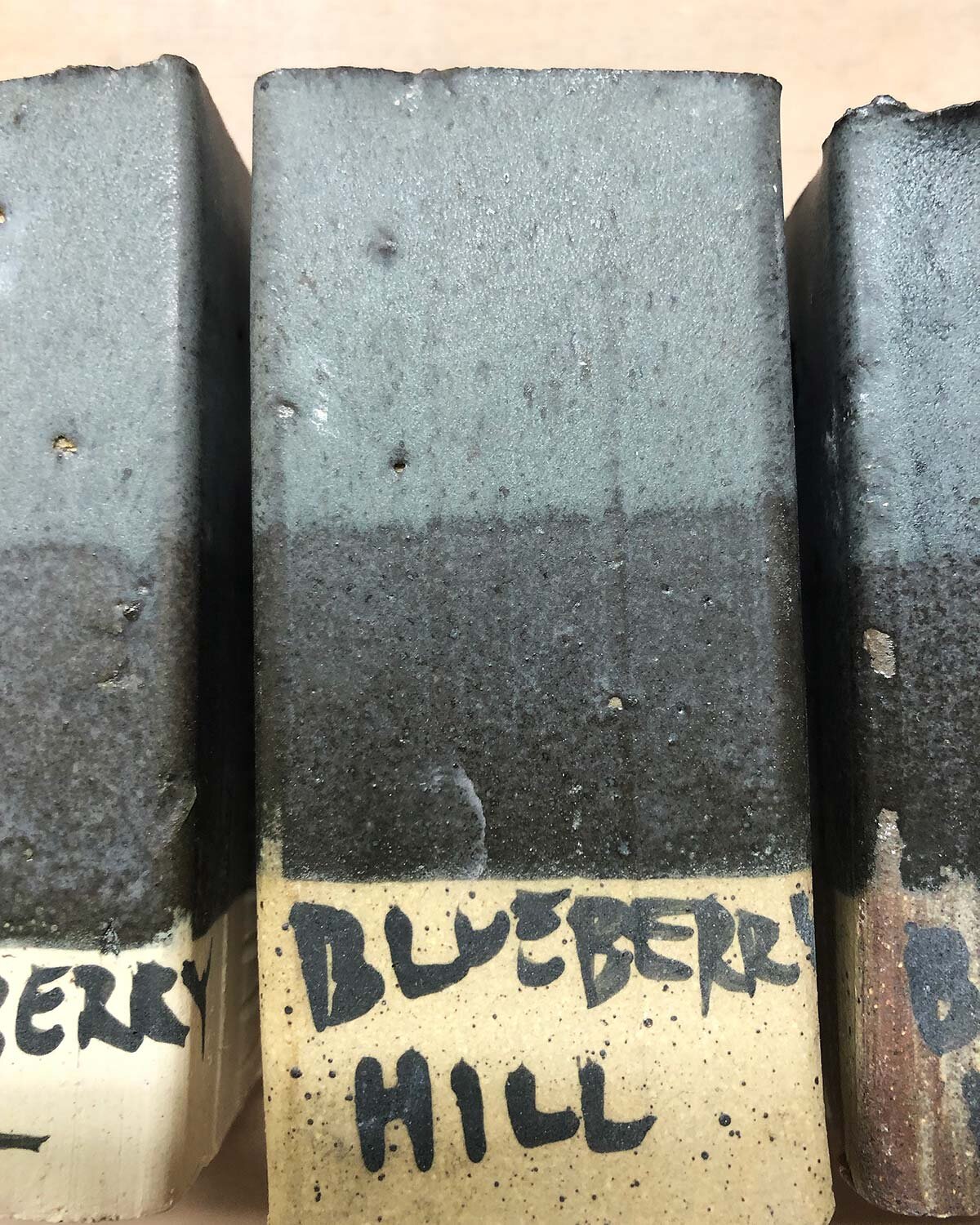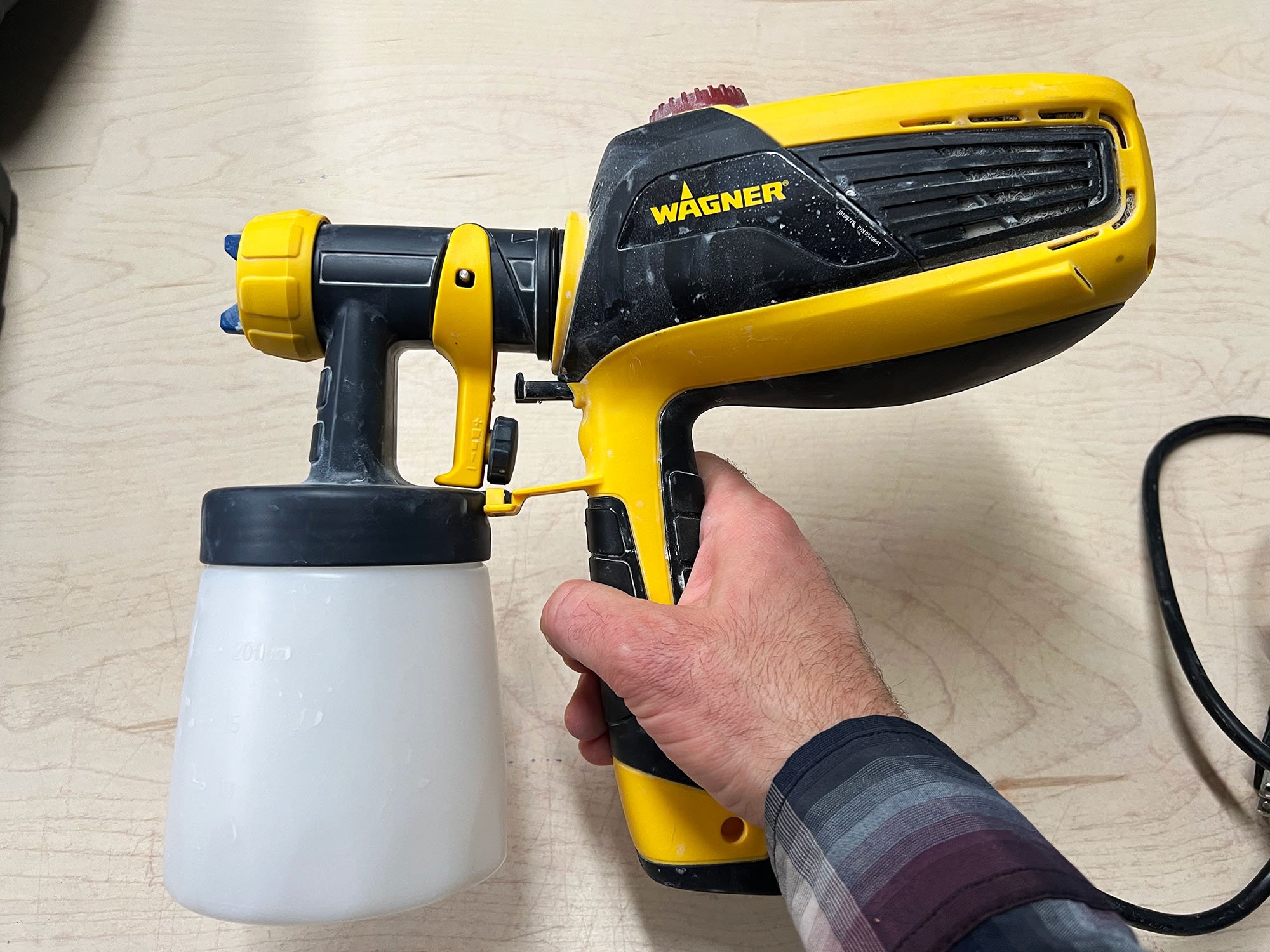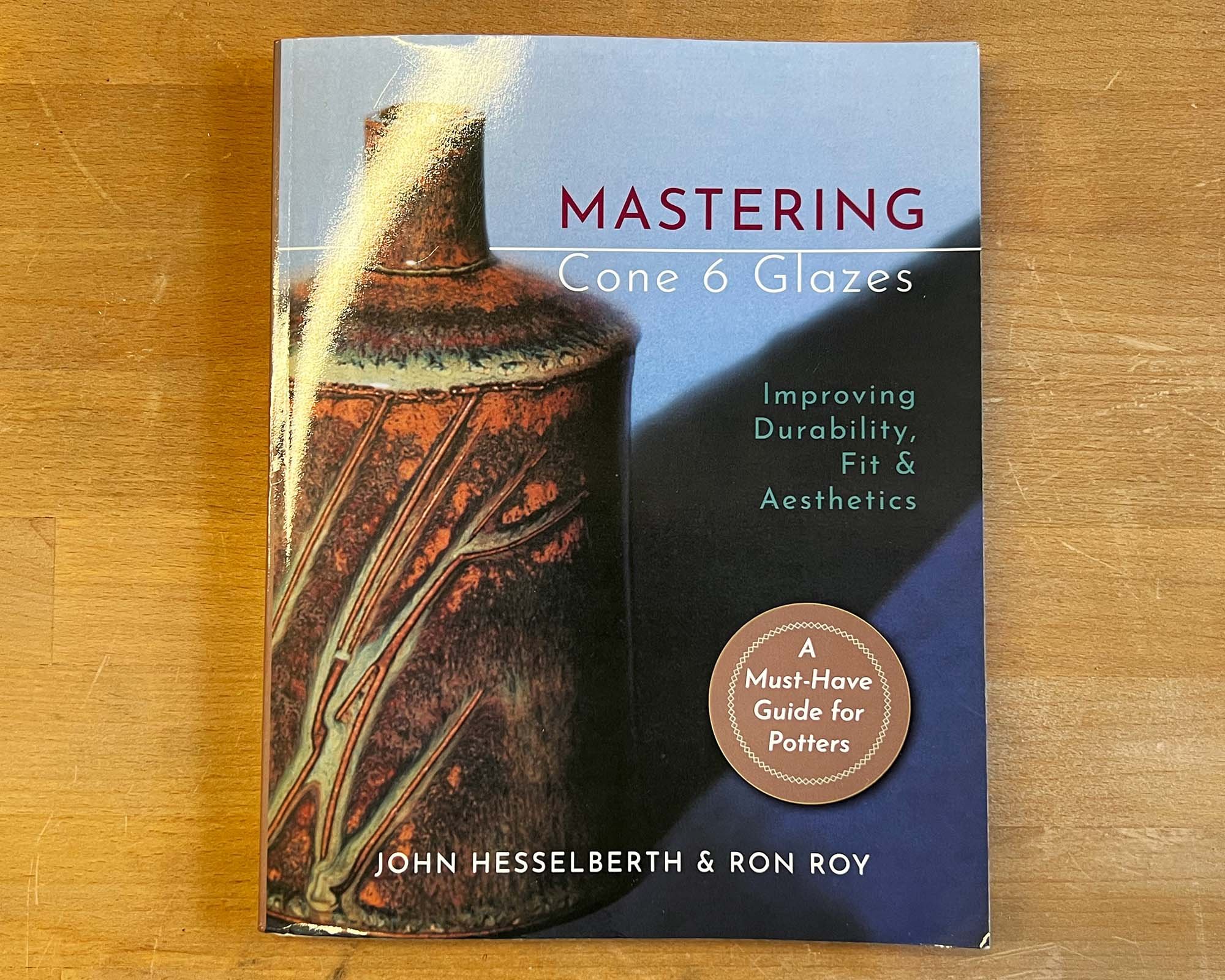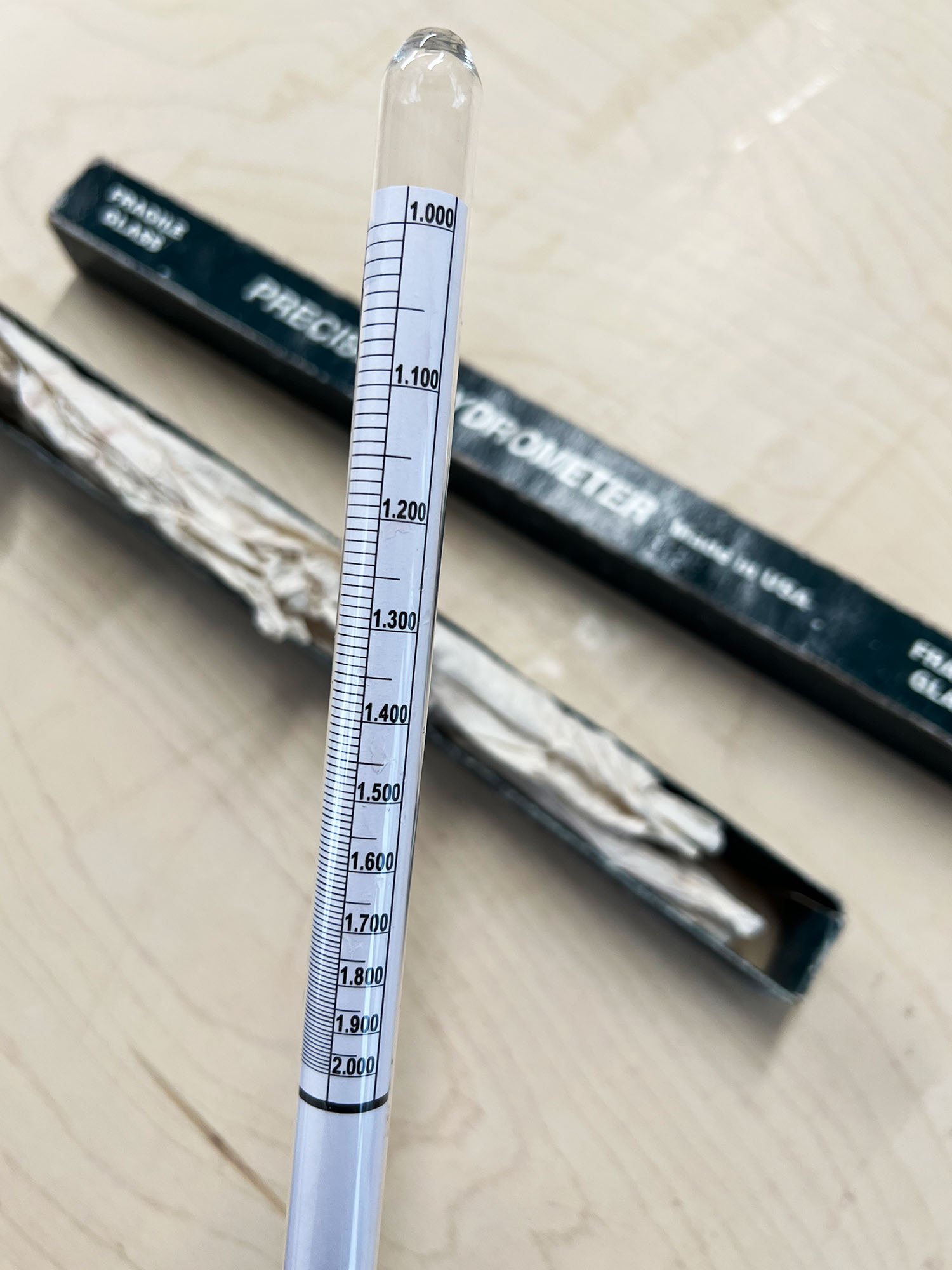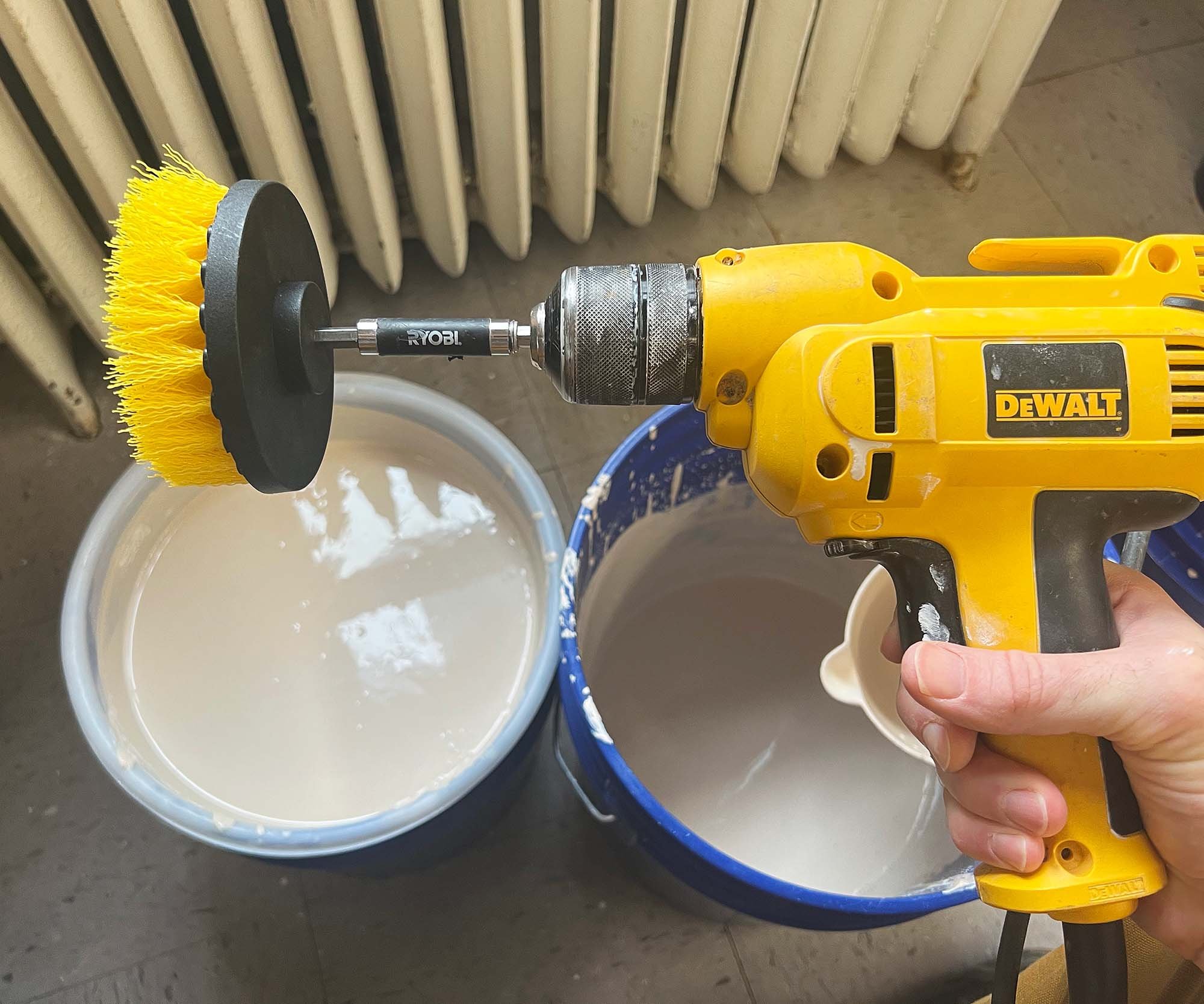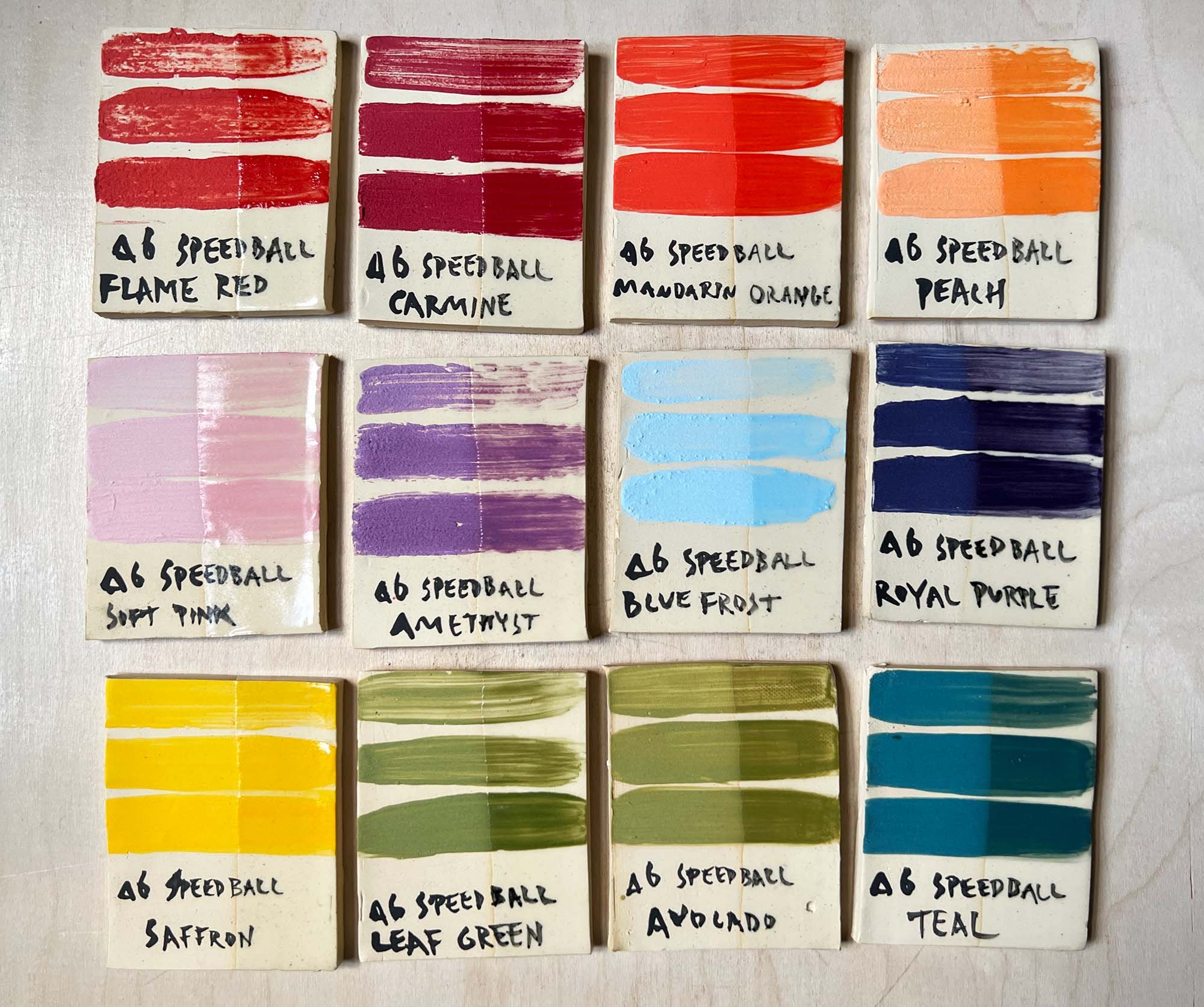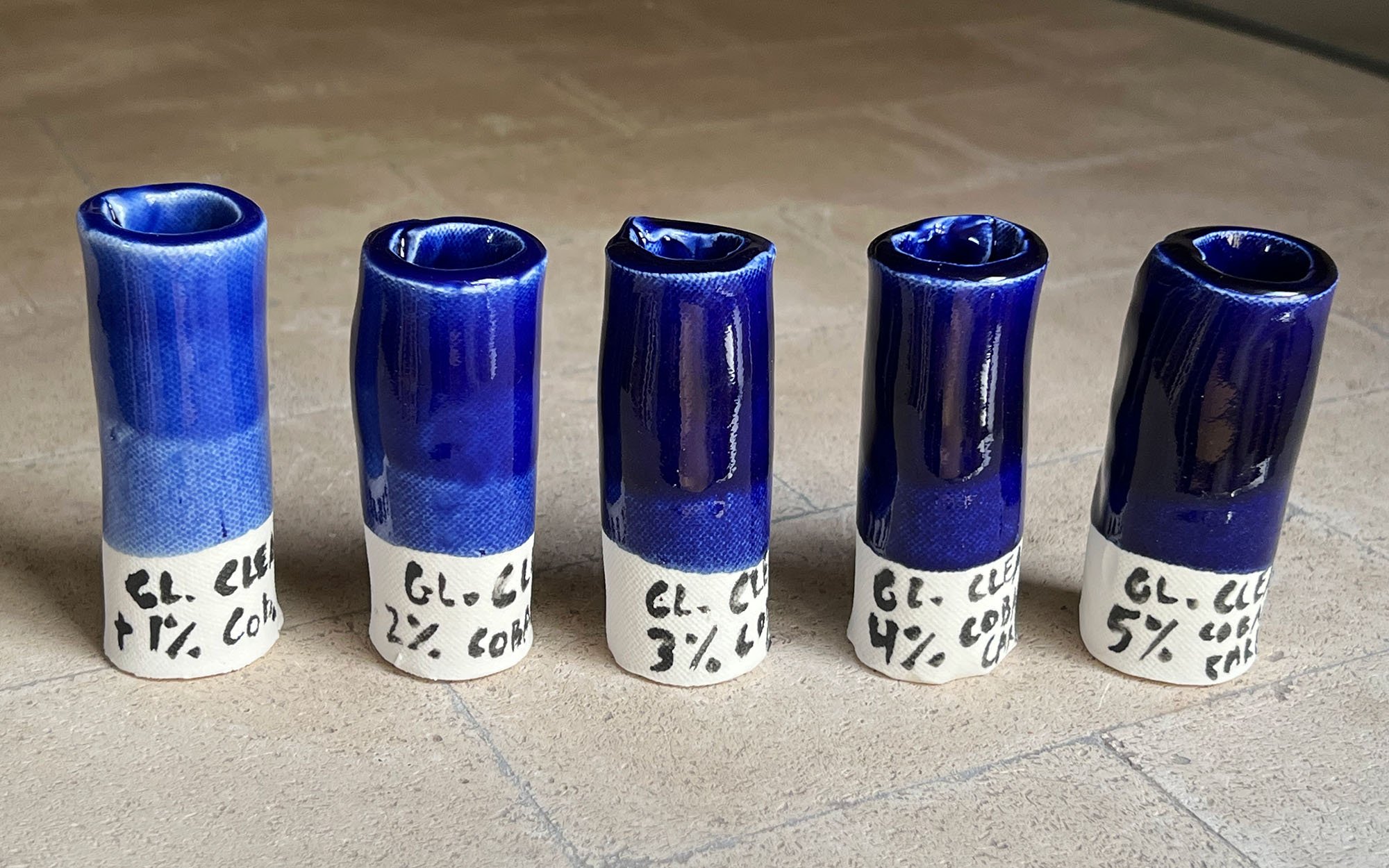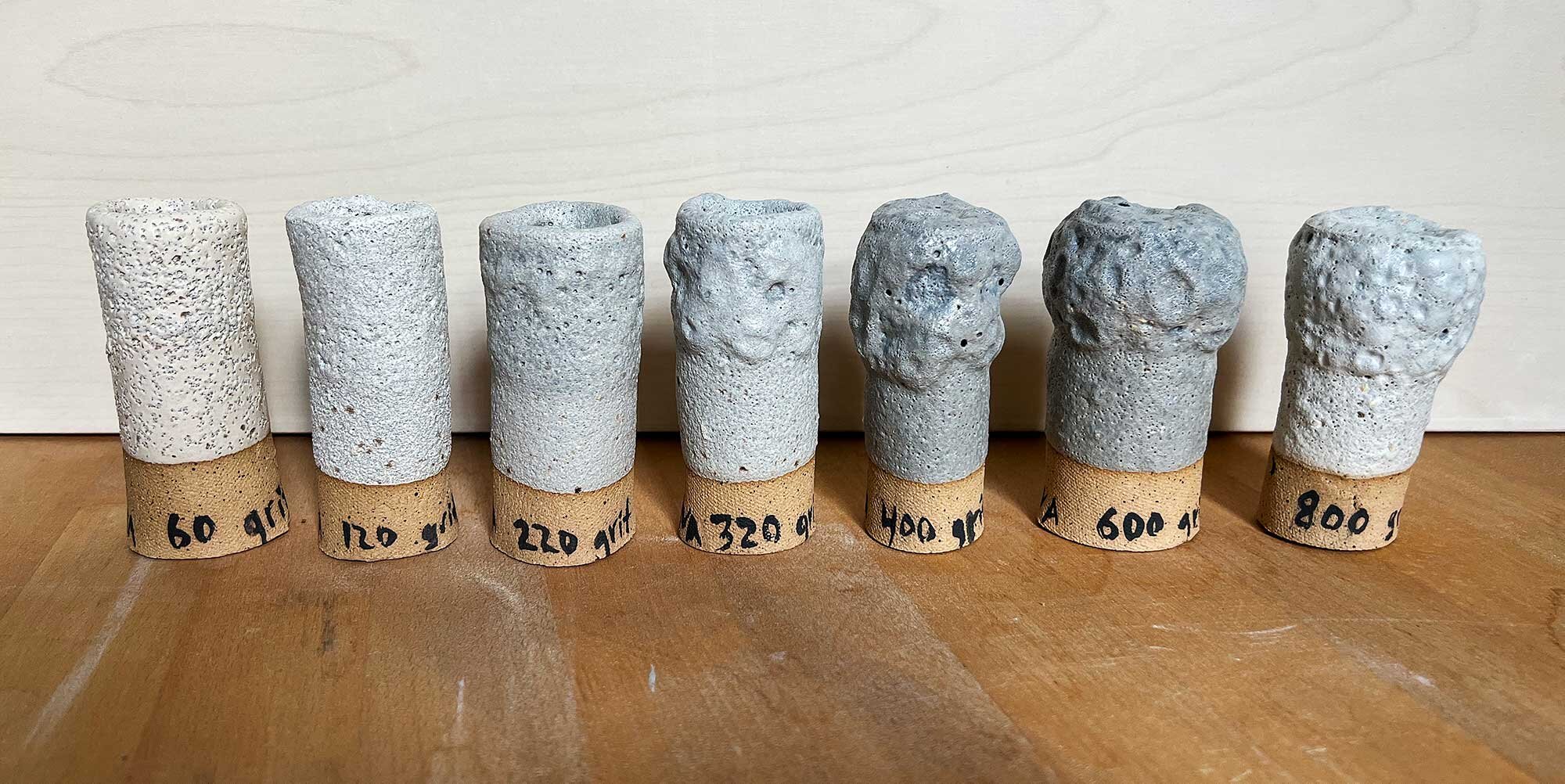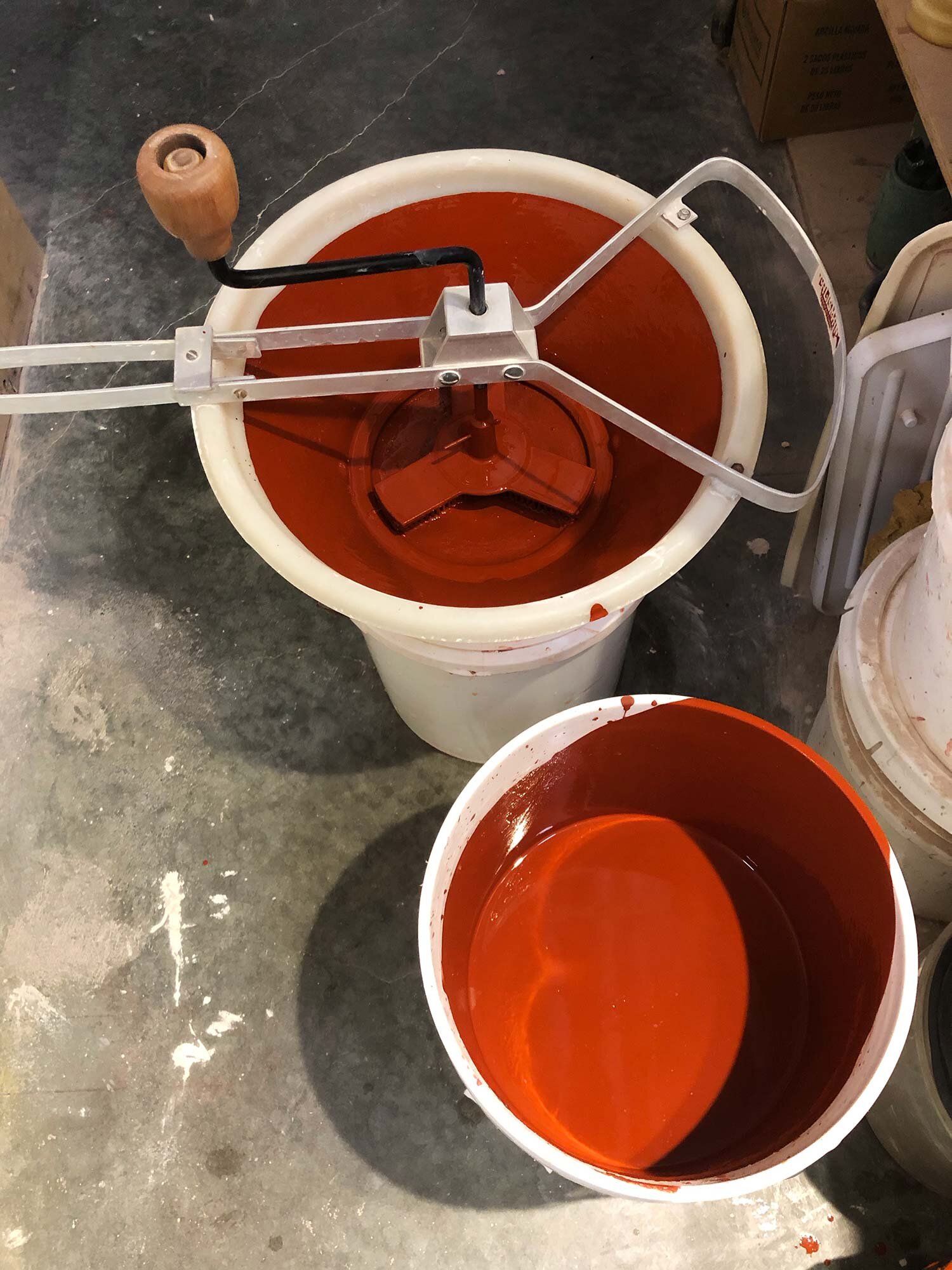#GlazesThatWork
This recipe is part of our series of glazes that just work. Click here to see the other recipes we’ve posted.
Pussy Willow and Blueberry Hill are interesting, dependable Cone 6 oxidation glazes with a matte to satin finish. The Pussy Willow glaze pictured above has a soft, warm quality with specks of straw yellow, brown, and red. The Blueberry Hill variant is a studio favorite for it’s blue-gray matte finish that mixes well with other glazes.
My research indicates that this glaze was developed (or at least first posted online) in the late 1990s by Elizabeth Jacobs of Montclair, New Jersey. A clayart post by Jacobs from 1999 can be found here. There’s also a partial entry for this recipe on Glazy, but it’s missing the Red Art and oxide additions.
The glaze tests here were oxidation fired to Cone 6 in an electric front-loading kiln, with a 10 minute soak and very slow cooling due to the thickness of the kiln walls. Try this glaze out, and let me know what you think in the comments.
Cone 6 Base Glaze
| Ingredient | Percentage | 3000g batch |
|---|---|---|
| NC4 Feldspar | 50 | 1500g |
| Whiting | 15 | 450g |
| Gerstley Borate | 5 | 150g |
| Silica | 5 | 150g |
| Zinc Oxide | 5 | 150g |
| OM4 Ball Clay | 10 | 300g |
| Red Art* | 10 | 300g |
| |
||
| For Pussy Willow, add: | ||
| Rutile Dark | 4 | 120g |
| Black Nickel | 2 | 60 |
| For Blueberry Hill, add: | ||
| Black Nickel | 2 | 60g |
| Cobalt Oxide | 1 | 30g |
| Bentonite | 2 | 60g |
* For a lighter gray with the Blueberry Hill variant, replace Red Art with OM4. Red Art is recommended for the Pussy Willow variant.
#Glazes That Work
This recipe is part of our series of posts of glazes that just work. There’s a million glaze recipes out there, but we’re posting a series of our tried-and-true favorites. Click here to see the other recipes we’ve posted.
For more info:
Read our guide on mixing glazes from scratch.
See our reviews of the best scales, cordless drills, or corded drills for mixing glazes.
Check out our recommended glazing accessories.
Don’t want to mix glaze from scratch? Shop mid-ranges glazes at Blick.
If you’d like to learn more about mixing your own mid-range glazes, the best place to start is The Complete Guide to Mid-Range Glazes by John Britt. The book provides a comprehensive overview of materials, techniques and glaze recipes. Shop the book at amazon or at bookshop.org.
Test Tile Images
The pinholing seen on some of the Blueberry Hill test tiles is my fault! I didn’t screen the small test batch and some lumps in the glaze caused those issues. It’s typically a very resilient glaze. The test tiles above were all dipped twice with quick dips. The top of the test tile shows the double dip, or about a 3 second dip.
Have you tested this glaze? Let us know in the comments.


